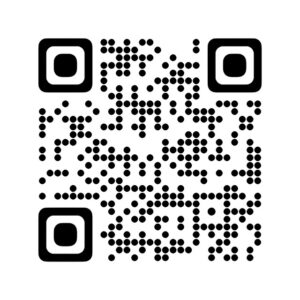Missed patient calls negatively impact healthcare operations, leading to unfilled appointments and dissatisfied patients. Implementing a call-back management system with automation recovers missed calls, prioritizes follow-ups, reduces no-show rates, and improves patient satisfaction. This technology frees staff from manual tracking, allowing them to focus on complex inquiries. Key features include real-time monitoring, seamless EHR integration, and intuitive interfaces for efficient call resolution. By combining automation and skilled human management, healthcare providers can enhance appointment bookings, improve communication, and ultimately offer better care.
In the healthcare sector, missed patient calls can significantly impact appointment bookings and overall efficiency. This article explores effective strategies to tackle this challenge, focusing on both manual and automated approaches for call-back management. We delve into the intricacies of understanding patient no-shows, the role of manual call-back processes, and the transformative power of automation. Discover key features, benefits, and optimization techniques for a robust call-back management system that enhances patient engagement and appointment utilization.
- Understanding the Challenge of Missed Patient Calls
- The Role of Manual Call-Back Management
- Implementing an Automated Callback System
- Key Features of a Successful Call-Back Management System
- Benefits of Integrating Automation for Appointment Bookings
- Strategies for Optimizing Your Call-Back Process
Understanding the Challenge of Missed Patient Calls

In today’s fast-paced healthcare environment, missed patient calls can significantly impact appointment booking and overall operational efficiency. A simple forgotten or unanswered call can lead to lost opportunities for treatment, increased wait times, and dissatisfaction among patients. This challenge is further exacerbated by the high volume of inbound calls healthcare facilities often receive, making manual tracking and retrieval of missed calls impractical and time-consuming. It’s not just about filling schedules; it’s about ensuring patient care isn’t compromised due to logistical oversights.
Implementing a robust call-back management system, coupled with strategic call follow-up automation, can help overcome these hurdles. A well-designed medical callback protocol leverages technology to automatically identify and prioritize missed calls, ensuring no appointment is left unfilled. By streamlining the process of lost call appointment recovery, healthcare providers can focus on delivering quality care while optimizing their resources, ultimately leading to better patient outcomes and a more efficient practice management system.
The Role of Manual Call-Back Management

In healthcare settings, effective call-back management is crucial for maximizing appointment bookings and patient care. While automated systems have gained popularity for their efficiency in reclaiming missed leads and streamlining processes, manual call-back management remains a vital component. Skilled administrative staff or dedicated call center agents play a pivotal role in handling inbound calls, understanding patient needs, and implementing a structured medical callback protocol. This human touch is essential to address complex patient inquiries, accommodate special requests, and ensure personalized interactions that build trust and encourage appointment confirmations.
A well-managed manual call-back system can significantly improve patient satisfaction and adherence rates. Agents are trained to follow up on missed calls promptly, utilizing call follow-up automation tools where applicable. This proactive approach allows healthcare providers to reclaim valuable leads, fill scheduling gaps, and ultimately enhance the overall patient experience. By combining automated processes with human expertise, healthcare organizations can achieve a delicate balance between efficiency and personalized service, fostering stronger relationships with their patient base.
Implementing an Automated Callback System

Implementing an automated callback management system can significantly enhance patient engagement and reduce no-show rates. These advanced systems act as a game-changer in healthcare settings, ensuring that every missed call is not just a lost opportunity but a potential reclaimed lead. The technology works by automatically calling patients at predefined intervals after their initial appointment request or reminder, reducing the risk of human error and increasing the chances of making contact. This process streamlines the medical callback protocol, allowing administrative staff to focus on other critical tasks.
By employing an automated system, healthcare providers can ensure that every patient receives a prompt and personalized response, improving overall satisfaction. Moreover, these systems offer comprehensive tracking and reporting capabilities, providing valuable insights into call outcomes and patient behavior. This data is crucial for refining the appointment booking process, addressing unanswered call resolution issues, and ultimately improving operational efficiency.
Key Features of a Successful Call-Back Management System

A successful call-back management system should possess several key features to effectively recover missed patient calls and boost appointment bookings. Firstly, it must offer real-time monitoring capabilities, allowing healthcare providers to track call volumes, response rates, and agent performance. This enables quick identification of areas needing improvement. Secondly, robust automation is vital for efficient unanswered call resolution. Automated call follow-up ensures no patient call goes unnoticed or unresponded to, enhancing patient satisfaction and reducing no-shows.
Additionally, a user-friendly interface designed for intuitive navigation is essential. Agents should be able to effortlessly manage and prioritize calls, access patient records promptly, and efficiently update booking information. Seamless integration with existing healthcare software, such as Electronic Health Records (EHR), streamlines processes, preventing data entry errors and ensuring accurate record-keeping. These features collectively contribute to a comprehensive lost call appointment recovery strategy.
Benefits of Integrating Automation for Appointment Bookings

Integrating automation into appointment booking processes offers significant advantages for healthcare providers. A robust call-back management system can effectively recover missed patient calls and reduce no-shows, ensuring better utilization of resources. By implementing automated call follow-up, practices can instantly reach out to patients who didn’t answer their initial appointment invitations, improving communication and response rates. This technology streamlines the process, allowing staff to focus on more complex patient needs.
With automated systems in place, providers can efficiently manage a larger volume of appointments while maintaining high levels of personalization. Automated call resolution ensures that every missed or unanswered call is addressed promptly, minimizing the impact on patient care and operational efficiency. This approach not only enhances overall patient experience but also contributes to better clinical outcomes and increased revenue for healthcare organizations.
Strategies for Optimizing Your Call-Back Process

Implementing an efficient call-back management system is key to optimizing your patient engagement and booking processes. The first step involves integrating automated call-back features that promptly address missed calls, ensuring no potential appointment slots go unanswered. These systems can be programmed to dial back at optimal times based on patient preferences, increasing the likelihood of reaching them when they are available.
Additionally, establishing a robust medical callback protocol includes defining clear guidelines for follow-up attempts. This may involve multiple call or SMS reminders before marking a missed call as resolved. By implementing an unanswered call resolution strategy that combines automated reminders with manual intervention from staff, healthcare providers can significantly reduce no-shows and enhance overall appointment bookings.
